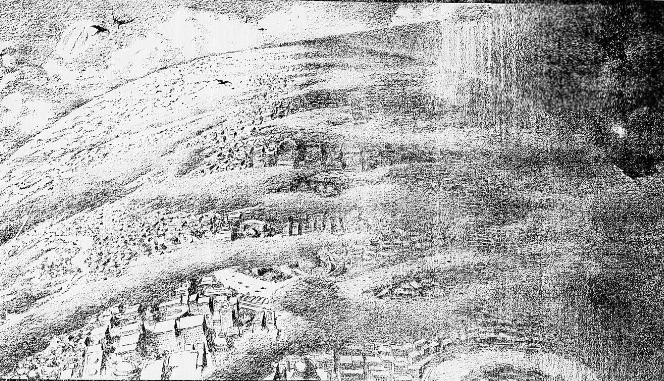
Can the weather on neighboring planets predict the weather on earth? They seemed to think so back in 1920.

Neighbor Planets Arouse Interest
Venus, Mars, and the Moon Described in Bulletin
Sending wireless messages to Mars and Venus and the possibility of projecting a rocket to the moon are subjects of recent speculation which have excited keener interest in our solar system.
“Mars always challenges interest,” says William Joseph Showalter, in a communication to the National Geographic Society.
“Its day is about the same length as ours, but its year is nearly twice as long. Although astronomers generally take less interest than laymen in the surmise as to whether other planets and stars are inhabited, since they, more than laymen, realize that this is a problem that must in all human probability remain unsolved, the question is more often asked about Mars than any other planet.
“Venus was an unusually interesting object in the sky during July of last year. Not again until February, 1921, will it appear as bright and fair in the evening sky. It has phases like the moon, and these can be seen even through a good field glass. Its day is believed to be the same length as its year, which is 224 of our days.”
Has Ice Capped Poles
“It is quite generally believed that Mars has ice capped poles. The telescope reveals white spots at the poles that they have every appearance of being like our ocean polar region. They advance toward the equator in winter and retreat in summer. In the summer of 1916, Pickering, who, with Lowell, has led the school of astronomers who believe they can see canals on Mars, said that he found the white caps stretching farther down toward the equator than he had ever seen them before.
“He said that if there was any connection between the weather of Mars and that of the earth, the winter of 1916-17 would be the coldest in many years. And it was. May it yet be possible to do long range weather forecasting on earth by studying the waxing and waning of the ice cap on the south pole of Mars?”
Picture of Solar System
“Perhaps our most graphic picture of the solar system is given by Herschel. Imagine a circular field two and a half miles in diameter; place a library globe two feet in diameter in the very center; eighty-two feet away put a mustard seed. The globe will represent the sun and the mustard seed Mercury.
“At a distance of 142 feet place a pea and another at 215 feet. These will represent Venus and the earth, both as to size and distance. A rather large pinhead at a distance of 327 feet will speak for Mars, and a fair sized tangerine a quarter of a mile distant will stand for Jupiter. A small lemon at two-fifths of a mile will play the role of Saturn, a large cherry three-fourths of a mile distant will answer for Uranus and a fair sized plum at the very edge of the field will proclaim Neptune.
“Eighty moons would be required to make one earth. A player there could throw a ball six times as far as it can be thrown on American diamonds. A man weighing 150 pounds there would weigh 900 on the earth. The earth receives as much light and heat from the sun in thirteen seconds as it gets from the moon in a whole year.”
Source: Evening star. [volume] (Washington, D.C.), 19 Feb. 1920.

